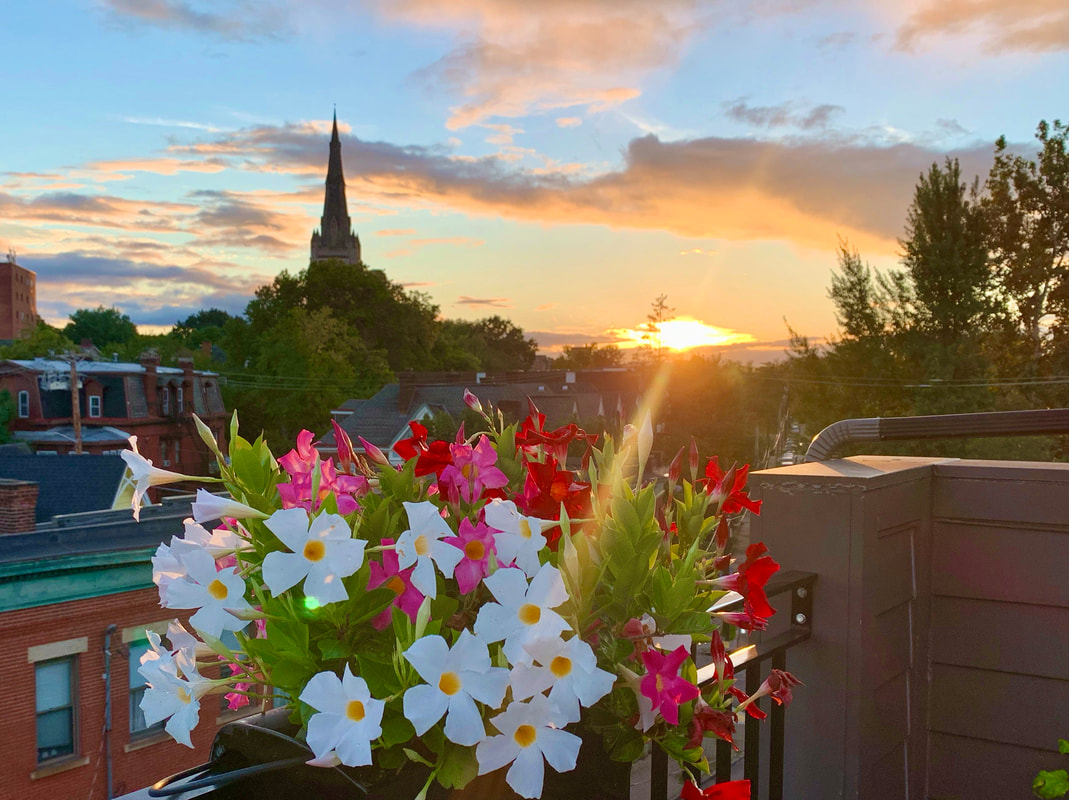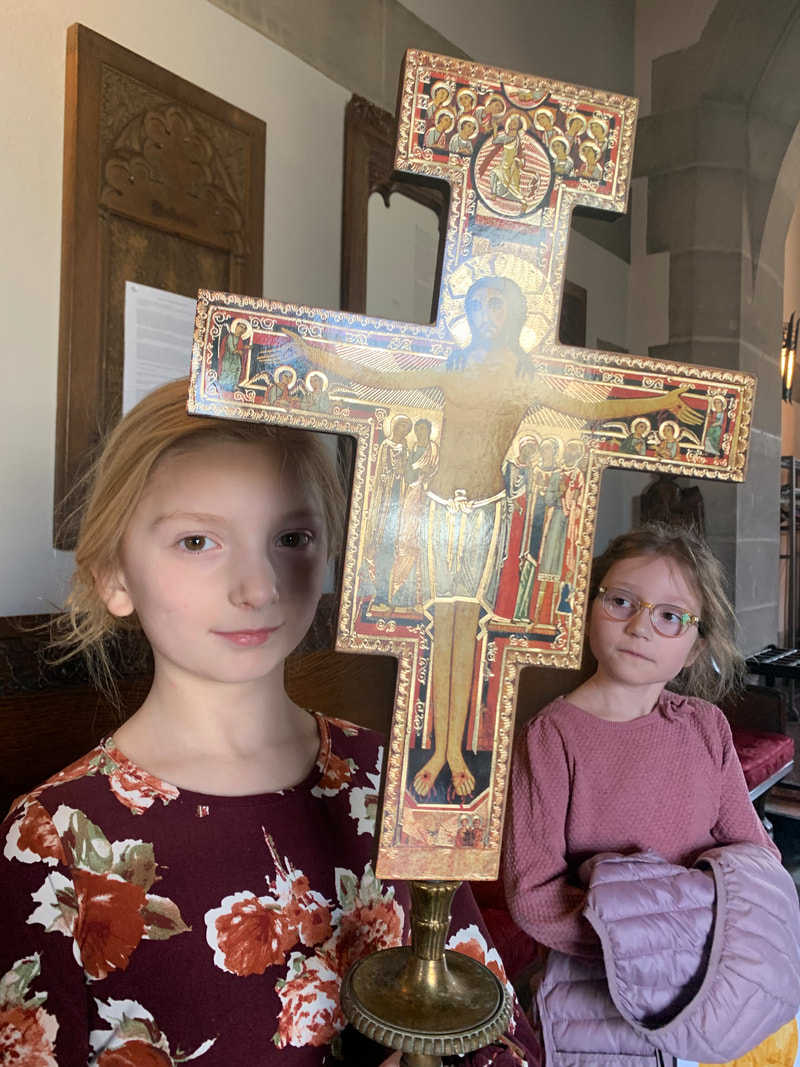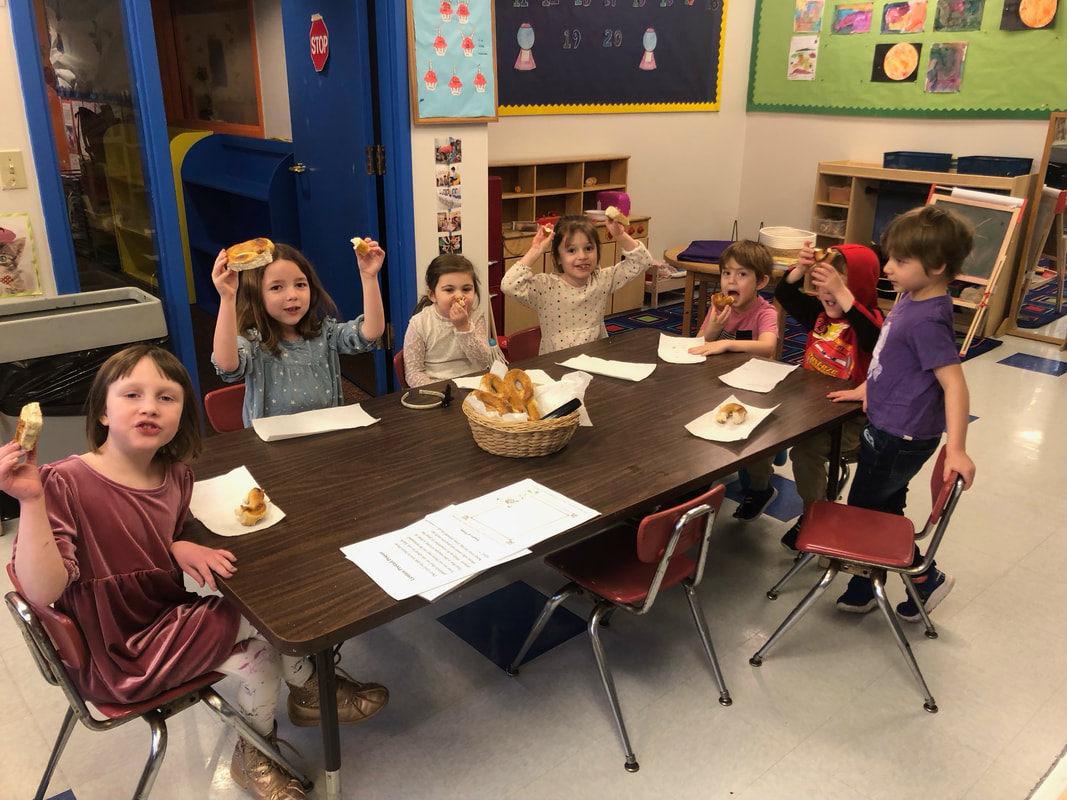|
As we approach Holy Week, when we experience the Paschal Mystery—Christ’s passion, death, and resurrection, a question might be, how do we present this most important (but also at times troubling and dark) event to the youngest in our community?
Sofia Cavalletti, a Hebrew Scripture Scholar who co-developed the Catechesis of the Good Shepherd, noted, “The proclamation of the death of Christ should never be disjoined from the announcement of His resurrection. ‘Christ has died’ is always followed immediately with, ‘and Christ is risen.’ At the Last Supper, Jesus anticipates the events of the coming day for his disciples. He tells them, “This is my body which is given for you,” and “this cup that is poured out for you is the new covenant in my blood” (Luke 22:19-20). In these words, Jesus explains that “what will happen on Good Friday will be the gift of his whole self; Jesus will give himself completely as an offering to the Father and to all of us”, a tremendous act of love. Our greatest gift to our children can be to initiate them into this mystery, the mystery that life is stronger than death and light overcomes darkness. We can affirm with the child that indeed, the love evidenced in Christ’s passion and death is the love that brought about the resurrection—the love that continues to cover the whole world. (Adapted from All about the atrium paschal mystery in the home - CGSUSA. (n.d.). Retrieved April 6, 2022, from https://www.cgsusa.org/wp-content/uploads/All-About-the-Atrium_Paschal-Mystery_In-the-Home.pdf)
0 Comments
Last week, students began discussing the Kingdom Parables. What do we know about the Kingdom of God? Once, Jesus compared the Kingdom of God to a mustard seed. Miss Elsa’s class listened to this parable and then examined tiny mustard seeds from Israel. They also took a close look at many other types of seeds and then planted some in individual containers. We will watch as these tiny seeds begin to sprout and then move them to our outdoor garden when the warm weather finally arrives. Some thoughts on the Parable of the Mustard Seed:
The older students read the Parable of the Leaven and pondered the comparison of yeast in bread to the Kingdom of heaven. We had a lot of fun mixing flour and yeast and watching our dough rise. Freshly baked bread straight out of the oven was a delicious way to conclude our lesson! You may have noticed the use of the San Damiano cross in our Faith Formation classes and during Children’s Liturgy of the Word. With the children, we hold the death and resurrection of Jesus together. We never speak about one without the other. They are one mystery. The San Damiano cross is the visual sign of this one mystery – the death and resurrection of Jesus. The depiction of Jesus is that of our living God: Christ stands upright, not nailed to the cross. The eyes of Jesus are open. His wounds are visible, the source of those wounds, the nails, and thorny crown are gone. Because his Risen life is stronger than death, in the place of the crown of thorns is a halo. The image of Christ is a figure of light that gives light to the other figures depicted on the cross, "I am the light of the world. Whoever follows me will not walk in darkness but will have the light of life. " (John 8:12). Source: The San Damiano Crucifix. CGSUSA. (2023, February 5). Retrieved March 15, 2023, from https://www.cgsusa.org/
We have a new addition to our classroom space in the Shoemaker Room! Students in Level II and III have been watching the progress of our fish tank installation. This 29-gallon freshwater aquarium is now home to several colorful Neocaridina shrimp, some golden moon (aka Mickey Mouse) platys as well as a variety of live plants and rocks from the Allegheny River. We’re excited to add more to the tank as the ecosystem normalizes and look forward to observing their growth and interaction as time progresses. It’s amazing to encounter the awe-inspiring work of our Creator and see first hand how everything is charged with the Glory of God, even in the midst of a cold, gray Pittsburgh winter! “Nature, God’s great creation, is a profound teacher. We live in a world that is mechanized and virtual; yet we are meant to live in harmony with nature…Here is where wonder begins: looking at the intricacies of a fern leaf, listening to the linnet sing, admiring the magnificence of an oak tree.”-Sofia Cavalletti, The Religious Potential of the Child.
The Faith Formation classes explored the season of Lent and ways we can grow closer to God during this special time of the liturgical year. We discussed various Lenten traditions and practices which help remind us to make space for God in our daily lives. The older students talked about prayer, fasting, and almsgiving as the three main practices of Lent. We discussed how these activities might look different for each individual and that there is no one “correct” way to experience Lent. We considered ways the Lenten season could serve as a “reboot” to get us to slow down and spend more time with God. As an activity, the class enjoyed creating a Lenten tree decorated with various ideas for doing small but meaningful actions during our forty-day journey. Lastly, we learned about the origins and significance of pretzels and then enjoyed sharing fresh soft pretzels with the younger students and parents. Students also discussed how Jesus used the wind to explain the spirit. The wind blows where it may, and we can hear it but not see it. We pondered some of the things involved in being in the Spirit that we cannot see, but know are there and then learned about the use of the labyrinth as a way to contemplate our spiritual paths and grow closer to God. In a family with small children, how do you journey through Lent in a developmentally appropriate way? One idea is to create a collection of symbolic items and place them on a purple cloth in a central place in your home. The items might include a candle, a cross, a scripture passage and/or prayer, and a small Bible. Other items to include might be a poem, an art postcard, or a small jar for collecting money for charity. These items can serve as starting points for conversation and be a guide to other disciplines you choose to take on as a family. As you explore and explain the items, children may ask questions and ponder in ways that help you journey through Lent together. Candle: A symbol of God’s presence with us. “We light the candle to remind us that God is with us in this place, at this time.” Purple cloth: For children who are familiar with advent, the purple of lent will be familiar as a color for a time of waiting (Purple is for Preparation). Use a circle calendar of the church year to show the children that we are in Lent, waiting for the great feast of Easter. Scripture, poem, or prayer: This can be written on cards that can be read together aloud. The Good Shepherd of Psalm 23 is a wonderful image to meditate on with young children. Cross: Take time to look at the cross together and discuss the crucifixion and the resurrection. Lenten Book Recommendations
Make Room (Paraclete Press) An invitation for children to wonder about the Lenten story. This unique book teaches children to experience Lent with all their senses and to see it as a special time for creating a welcoming space for God. Simple activities like cleaning a room, making bread and soup, and inviting a neighbor for supper become acts of justice and kindness, part of a life of following Christ, and a way to make room for God in our lives and in the world around us. Lenten Survival Guide for Kids (Paraclete Press) Written for 7-11-year-olds, this playful guide appeals to kids who want to know more about what adults tell them is a serious time. Without talking down to them, and challenging them to learn and do more, the following topics are explored in detail: What Lent Is, What Lent Definitely Is Not, 40 Days of Survival Tactics, and A Few Prayers and Practices – Only for Kids. Adapted from: Watkins, E. (2023, February 16). Creating a Lenten prayer space at home. Building Faith. Retrieved February 22, 2023, from https://buildfaith.org/creating-lenten-prayer-space-home/ |
Location |
|




 RSS Feed
RSS Feed